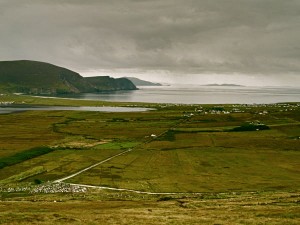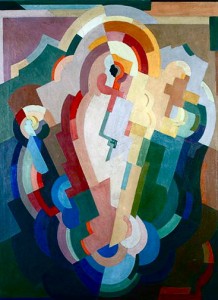“There was something about [Quirke] that [Sylvia] felt she could trust. It was not that he seemed particularly warm or sympathetic. Quite the opposite, in fact. She felt he was the kind of man she could speak to precisely because of a certain coolness, a certain stoniness, she detected in him….indifference.”
 Fans of the previous four novels in the Quirke series by “Benjamin Black,” the pen name of Booker Prize-winning author John Banville, will celebrate the publication of this sixth novel of the Dublin-based series, set in the 1950s. Continuing all the main characters from previous novels, Black spends little time rehashing the sometimes sordid history of their relationships. Instead, he picks up where he left off with A Death in Summer, with few references to the characters’ backgrounds from previous novels.
Fans of the previous four novels in the Quirke series by “Benjamin Black,” the pen name of Booker Prize-winning author John Banville, will celebrate the publication of this sixth novel of the Dublin-based series, set in the 1950s. Continuing all the main characters from previous novels, Black spends little time rehashing the sometimes sordid history of their relationships. Instead, he picks up where he left off with A Death in Summer, with few references to the characters’ backgrounds from previous novels.
Quirke, a Dublin physician at the Hospital of the Holy Family, is still running the pathology lab, and he has finally resolved an old wound by reuniting with his wary daughter Phoebe Griffin. Brought up as the child of Quirke’s stepbrother Malachy and never informed until recently as to her real  parentage, Phoebe is somewhat leery of Quirke, not really knowing how to treat him or what he expects. Quirke, a long-time friend of Police Detective Inspector Hackett, is still available for private consultations with him, especially when the real reasons for a death may be in dispute, and he has no objections to accompanying Hackett on investigations or calls to bereaved families when they involve conversations with Dublin’ elite. Quirke is well known and has been part of that social group, whereas Hackett is more comfortable with his buddies at the pub.
parentage, Phoebe is somewhat leery of Quirke, not really knowing how to treat him or what he expects. Quirke, a long-time friend of Police Detective Inspector Hackett, is still available for private consultations with him, especially when the real reasons for a death may be in dispute, and he has no objections to accompanying Hackett on investigations or calls to bereaved families when they involve conversations with Dublin’ elite. Quirke is well known and has been part of that social group, whereas Hackett is more comfortable with his buddies at the pub.
Both Hackett and Quirke become involved with an investigation at the beginning of this novel when Victor Delahaye, the main partner in Delahaye and Clancy, an old company with a flourishing automobile repair business, invites the young son of his partner Jack Clancy to accompany him on a sail. Young Davy Clancy hates sailing, and has no idea why Jack, whom he does not know well, makes such an issue of having him as the only passenger. This trip does not make Davy like sailing any better. When he and Delahaye are far from land, Delahaye pulls out a gun and kills himself. Davy, terrified by the death, the blood, and the horror of having witnessed such a ghastly scene, inexplicably throws the gun overboard, then has to wait with the exsanguinating body until he is rescued by a passing boat. Quirke, upon examining the body, confirms that the bullet had to have been self-inflicted, and he accompanies Inspector Hackett when he interviews the not-so-bereaved family.

The bay from the side of Slievemore, the place where Victor Delahaye and Davy Clancy went for a sail.
The remainder of the novel involves the search to discover why Victor Delahaye committed suicide, but a major complication arises (as it always does), when yet another death occurs at sea, this one far more complicated.
Black’s style has always been to keep things simple throughout and to write clear, concise prose, and no reader will have trouble keeping track of the characters, their motivations, and how their actions evolve from within. At his most incisive, Black has always placed those characters firmly within the 1950s milieu of Dublin society, allowing the action to turn on personalities and their predicaments. Here he develops insights into the Delahaye family, which includes Mona, Victor’s much younger, acquisitive wife; Victor’s handsome and amoral identical twins, Jonas and James, and Victor’s unmarried sister Marguerite (Maggie), conveying their values or lack of them. The Clancy family, smaller, consists of Jack’s benighted wife Sylvia and their timid son Davy, who seems unable to perform an assertive act. All the men in both families have lovers, adding to the turmoil, and the Delahaye twins are also friends with David Sinclair, Quirke’s assistant, who happens to be Quirke’s daughter Phoebe’s lover.

Mainie Jellett (1897 – 1944) was the first Irish artist to paint in the abstract style. One of her paintings adorned the Delahaye living room.
While these characters are being introduced, Quirke himself is also dealing with issues. His long-time problems with alcohol continue, though he seems to be gaining better control over them, and his love life is a constantly changing melodrama. He is anxious to restart a previously failed relationship with a woman he now believes he loves.
Those new to the series may become completely absorbed in the mystery and its revelations about characters, but those who have read the entire series so far (and I’ve read them all) may wonder, sadly, if the series has played itself out. The new characters are static and verge on stereotypes, and Quirke fails to grow or develop in new ways. The expected twists in the story do come with the kind of suddenness one expects of such mysteries, but they are simple twists, uncomplicated, and many readers may figure out some of the “surprises” – and the ending – before they occur. Vengeance can often be complex, and it is certainly a major motivating factor here, but the sometimes elegant simplicity which Black has made a trademark in the earlier novels, becomes merely simplistic here.
Also reviewed here: A DEATH IN SUMMER, THE BLACK-EYED BLONDE, CHRISTINE FALLS, THE SILVER SWAN, EVEN THE DEAD (Quirke)
Photos, in order: The author’s photo appears on http://www.benjaminblackbooks.com/aboutauthor.htm
A view of the bay from the side of Slievemore, where Delahaye was Commodore of the Yacht Club and where he took Davy Clancy on his sailboat: http://www.docbrown.info
Mainie Jellett (1897 – 1944) was Ireland’s first abstract artist. According to http://www.askaboutireland.ie, which was also the source of this photo, “Her work was influenced by French Cubism and she spent some time in Paris , with fellow abstract painter Evie Hone, learning from French artists Andre Lhote and Albert Gleizes.”
ARC: H. Holt
